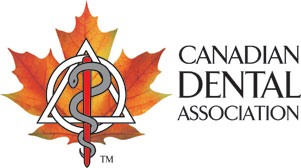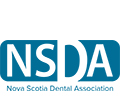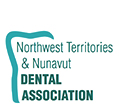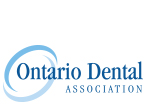Getting the Oral Health Message out to Culturally-Specific Groups
An interview with Dr. Rosamund Harrison, Associate Professor and Chair, Division of Pediatric Dentistry, University of British Columbia, Vancouver
April 30, 2004 — Ottawa — The Healthy Teeth: Happy Children program is the brainchild of Dr. Rosamund Harrison and Dr. Tracy Wong of Vancouver. It began in 1994, with the arrival of large numbers of Vietnamese immigrants to B.C.'s Lower Mainland. Reports from service providers in Vancouver's inner-city public health clinics indicated that preschool Vietnamese children had extensive dental treatments needs that were not being met.
The program's aim was to promote improved oral health by providing one-to-one counseling to Vietnamese mothers during well-baby visits to a local health clinic. Healthy Teeth: Happy Children has since been made available to mothers from other cultural groups. The Canadian Dental Association (CDA) interviewed Dr. Harrison at the Pacific Dental Conference in Vancouver on March 4.
The Healthy Teeth: Happy Children program has received the 2004 CDA Oral
Health Promotion Award.
[ More Information ]
| CDA: Tell me about your involvement in culturally specific oral health promotion projects. You've worked mainly with Vietnamese-Canadian, Indo-Canadian and First Nations families. What made you decide to address the oral health needs of immigrant and aboriginal populations in B.C.? Dr. Rosamund Harrison: As a pediatric dentist, it became obvious to me that the children who were most at risk to extensive dental decay (i.e. early childhood caries) were from our new immigrant and First Nations communities. |
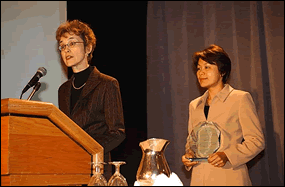 Drs. Harrison and Wong accepting the Oral Health Promo- tion Award during the CDA Awards Ceremony, held April 23 in Ottawa in conjunction with CDA's Annual General Meeting. |
In the early nineties, I began working for Vancouver Coastal Health and all the children I was taking to B.C. Children's Hospital to treat were Vietnamese. I could see that the "traditional" dental education programs were not reaching this group of new Canadians. At the time, Vietnamese were the fifth largest immigrant population in B.C.'s Lower Mainland.
Around that same time, I was also working with a public health dental hygienist on a project with a First Nations community in northern B.C. The project with Vietnamese families was later extended to include low-income, inner-city, Chinese-speaking families in Vancouver. These demonstration projects eventually led to collaboration with colleagues at the University of Washington, where I am an investigator on a clinical trial with Indo-Canadian families in Surrey, B.C.
CDA: How do you get the oral health message out to the non-English-speaking community?
RH: It's not appropriate for an "outsider" who isn't part of a distinctive culture to come in "with all the answers." You need a more participatory approach where you involve community members in planning and delivering the prevention program. Our project — Healthy Teeth, Happyy Children — involved a Vietnamese community dental health worker to serve as our liaison to the community — our oral health interpreter, if you will.
She counsels Vietnamese mothers at well-baby clinics about healthy behaviours and oral health promotion for their children. This dental health worker also speaks Mandarin and Cantonese, so we were able to extend our oral health program to the Chinese community. She also did interviews on a Vietnamese radio program on Vancouver's multicultural radio station, CHMB-AM. Her one-on-one approach with new moms is the most effective approach, though.
CDA: What is your connection with the Brighter Smiles program, which looks after the oral health needs of people living in the remote First Nations community of Hartley Bay, B.C.?
RH: This is also a demonstration project that is now receiving ongoing funding. It is a collaboration between the Faculty of Dentistry, the Department of Pediatrics in the Faculty of Medicine and the community of Hartley Bay. The problem of dental decay among Aboriginal children isn't going to be solved by the dental profession alone, but by a joint effort involving physicians, public health agencies, and community leaders and families.
We're getting the message across that dental health is an important child health issue and that the community has a role to play in reducing early childhood caries and other oral health diseases. But you really need a key player in the community to make it all work. In Hartley Bay, our key players are the community health representative and the health director.
CDA: Is your long-term objective to expand these programs to other immigrant and aboriginal communities?
RH: We have demonstrated that one-on-one health "coaching" by a lay counsellor can be really effective in high-risk communities. We're still searching about for answers, trying to find what works, so we will no longer see three-year-olds getting 16 teeth extracted. We're still treating too many of these desperate cases.
CDA: Would you say that the oral health of these cultural groups and low-income families is steadily improving in B.C.? Is there less dental disease among these populations now than when you first started these oral health awareness campaigns for new Canadians and First Nations peoples?
RH: We are anticipating that these demonstration projects will have a snowballing effect, but it would be inappropriate to generalize to every high-risk community based on our results, however encouraging they may be.
CDA: Didn't Variety Club International have to step in to rescue the Douglas College dental clinic, which catered to children from low-income families? Is this clinic still operating?
RH: Yes, it is and I can't say enough good things about Variety Club -The Children's Charity for rescuing this clinic after the B.C. government cut its funding support.
CDA: If there is one important message you would like to stress, what would that message be?
RH: We need to work with families as early as we can to help them understand that dental health is an important part of a child's health. And we need to listen and learn from the communities that we are working with. Community members already have a depth of knowledge, skills and understanding to share with us — the health professionals. Partnership and collaboration is the way to go. If we want to get our oral health message across, we really have to be prepared to listen.
CDA is the authoritative national voice of dentistry, dedicated to the representation and advancement of the profession, nationally and internationally, and to the achievement of optimal oral health.
